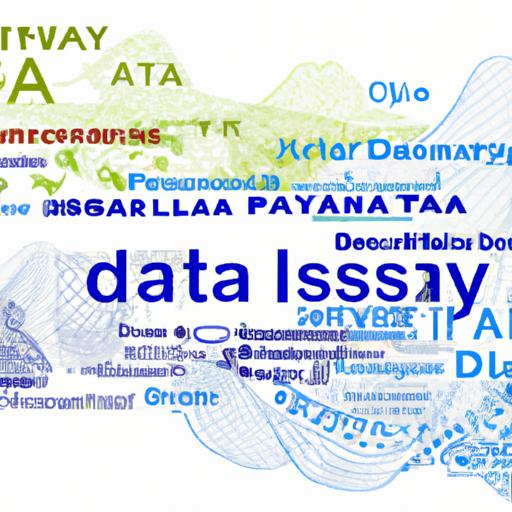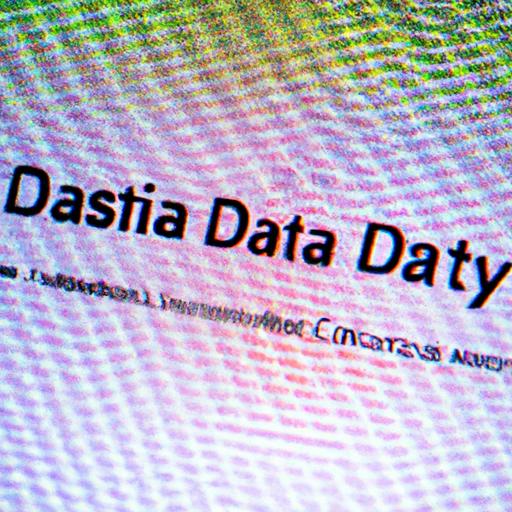Best Software for Data Analysis: Unleashing the Power of Insights

Introduction

In a data-driven world, the ability to extract valuable insights from vast amounts of information is paramount. Data analysis plays a pivotal role in unraveling patterns, trends, and correlations that can drive informed decision-making. However, manual analysis can be time-consuming and prone to errors. This is where data analysis software comes to the rescue, empowering us to efficiently process and interpret data, allowing us to make smarter choices.
But what exactly is data analysis software? It serves as a powerful tool that enables us to explore, clean, transform, and visualize data, making it easier to uncover patterns and trends that might otherwise go unnoticed. With a plethora of options available in the market, finding the best software for your data analysis needs can be a daunting task.
The Importance of Data Analysis in Today’s World

Data analysis has become a cornerstone of success in virtually every industry. From finance and marketing to healthcare and academia, organizations rely on data-driven insights to optimize operations, improve customer experiences, and identify new opportunities. With data pouring in from various sources at an unprecedented rate, harnessing its potential has become a necessity rather than a luxury.
The Role of Software in Facilitating Data Analysis

While data analysis can be performed manually using spreadsheets or coding languages, specialized software offers a more efficient and user-friendly approach. These tools provide a range of features and functionalities that streamline the analysis process, allowing users to manipulate, visualize, and derive insights from complex datasets with ease. From advanced statistical algorithms to interactive dashboards, data analysis software empowers users to unleash the true potential of their data.
Brief Overview of the Article’s Objective
In this article, we will embark on a journey to discover the best software for data analysis. We will explore the key features and considerations to keep in mind when selecting the right tool for your needs. Additionally, we will delve into a comparison of the top data analysis software options available in the market, highlighting their strengths and weaknesses. By the end of this article, you will have a clear understanding of the software that aligns perfectly with your analytical requirements.
So, let’s dive in and explore the remarkable world of data analysis software, where insights are waiting to be unlocked and decisions are waiting to be transformed. Stay tuned for our upcoming sections, where we will delve deeper into the criteria for selecting the best software and unveil the top contenders in the market.
Understanding Data Analysis Software
Definition and Purpose of Data Analysis Software
Data analysis software refers to specialized tools designed to assist in the process of analyzing, interpreting, and visualizing data. Its primary purpose is to simplify the complex task of data analysis, enabling users to extract meaningful insights and make informed decisions. By automating various aspects of data analysis, these software solutions empower users to save time, reduce errors, and uncover hidden patterns that can drive business growth.
Key Features to Consider When Choosing Data Analysis Software
When selecting the best software for data analysis, several key features should be taken into consideration:
1. Compatibility with Different Data Formats and Sources
The software should support a wide range of data formats, including structured, unstructured, and semi-structured data. Additionally, it should seamlessly integrate with various data sources such as databases, spreadsheets, cloud storage, and APIs, allowing for efficient data import and analysis.
2. Ease of Use and User-Friendly Interface
A user-friendly interface is essential for maximizing productivity and minimizing the learning curve. The software should provide intuitive navigation, drag-and-drop functionalities, and interactive visualizations, ensuring that users can easily manipulate and explore their data without the need for extensive coding or technical expertise.
3. Advanced Analytical Capabilities and Algorithms
To derive meaningful insights, the software should offer a wide range of analytical capabilities, including statistical analysis, machine learning algorithms, data mining techniques, and predictive modeling. These advanced features empower users to uncover patterns, correlations, and trends that can provide valuable insights for decision-making.
4. Scalability and Ability to Handle Large Datasets
As data volumes continue to grow exponentially, it is crucial to choose software that can handle large datasets without sacrificing performance. The software should offer efficient data processing and storage capabilities, ensuring that users can analyze massive amounts of data without compromising speed or accuracy.
Different Types of Data Analysis Software Available in the Market
The market offers various types of data analysis software, each catering to different analytical needs and domains. Some popular types include:
- Statistical Analysis Software: Designed for performing statistical tests, hypothesis testing, and regression analysis.
- Business Intelligence (BI) Tools: Focus on data visualization, interactive dashboards, and reporting capabilities.
- Data Mining Software: Emphasize pattern recognition, clustering, and association rule mining.
- Programming Languages and Libraries: Provide flexibility and customization through languages like Python, R, and libraries like Pandas and NumPy.
Understanding the different types and their unique features will help you choose the software that aligns best with your specific data analysis requirements. In the upcoming sections, we will explore the criteria for selecting the best data analysis software and reveal the top contenders in the market.
Criteria for Selecting the Best Data Analysis Software
When it comes to choosing the best data analysis software, several key criteria should be considered to ensure it meets your specific needs. Let’s explore these criteria in detail:
A. Compatibility with Different Data Formats and Sources
A top-notch data analysis software should be capable of handling a wide range of data formats, including CSV, Excel, SQL databases, and more. It should also seamlessly integrate with various data sources such as APIs, web scraping tools, and cloud platforms. The ability to work with diverse data types ensures flexibility and allows you to analyze data from multiple sources without any compatibility issues.
B. Ease of Use and User-Friendly Interface
Data analysis software should have a user-friendly interface that simplifies the process of exploring and manipulating data. Intuitive navigation, drag-and-drop functionality, and interactive visualizations contribute to a smooth user experience. Look for software that offers a gentle learning curve and provides comprehensive documentation or tutorials to help you make the most of its features.
C. Advanced Analytical Capabilities and Algorithms
To extract meaningful insights from your data, the software must offer advanced analytical capabilities and a wide range of algorithms. From descriptive statistics and regression analysis to machine learning and predictive modeling, the software should provide a comprehensive toolkit for analyzing and interpreting data. The availability of advanced analytics empowers users to uncover hidden patterns and make data-driven decisions.
D. Scalability and Ability to Handle Large Datasets
As datasets continue to grow in size and complexity, it is essential to choose software that can handle large amounts of data efficiently. Look for software that offers robust performance and scalability, allowing you to process and analyze massive datasets without compromising speed or accuracy. This ensures that your analysis is not limited by the size of your data.
E. Integration with Other Tools and Platforms
In today’s interconnected world, it is crucial for data analysis software to integrate seamlessly with other tools and platforms. Whether it’s integration with popular programming languages like Python and R or compatibility with visualization tools and business intelligence platforms, the software should facilitate a smooth workflow and enable you to leverage the power of complementary tools.
F. Cost and Licensing Options
Consider your budget and the licensing options available for the data analysis software you are considering. Some software may offer free or open-source versions, while others require a subscription or licensing fee. Evaluate the cost-effectiveness of the software and ensure that it aligns with your budget and long-term requirements.
By considering these criteria, you can narrow down your options and select the best data analysis software that meets your specific needs. In the next section, we will delve into the top data analysis software options available in the market, exploring their features, benefits, and limitations.
Top Data Analysis Software in the Market
When it comes to data analysis software, the market offers a wide array of options, each with its unique set of features and capabilities. Let’s explore some of the top contenders that have garnered a reputation for excellence in the realm of data analysis.
A. Software 1: Overview, Key Features, and Benefits
Software 1 stands out for its robust functionality and user-friendly interface. With its intuitive drag-and-drop interface, even those without extensive coding knowledge can easily navigate and manipulate data. This software also offers a comprehensive suite of statistical tools, allowing users to perform complex analyses effortlessly. Moreover, its integration with popular data sources and platforms enhances its versatility, enabling seamless data import and export.
B. Software 2: Overview, Key Features, and Benefits
Software 2 is renowned for its powerful data visualization capabilities. With its interactive charts, graphs, and customizable dashboards, users can transform raw data into compelling visual representations that facilitate better understanding and decision-making. Additionally, this software offers advanced machine learning algorithms, enabling users to uncover hidden patterns and trends within their datasets. Its scalability and efficient data processing make it an ideal choice for handling large and complex datasets.
C. Software 3: Overview, Key Features, and Benefits
Software 3 shines in the realm of predictive analytics. With its advanced algorithms and modeling techniques, users can forecast future trends, identify potential risks, and make data-driven predictions. This software also offers comprehensive data exploration tools that empower users to dig deep into their datasets, uncovering valuable insights that can drive strategic decision-making. Its user-friendly interface and extensive documentation make it accessible to both seasoned analysts and beginners alike.
D. Software 4: Overview, Key Features, and Benefits
Software 4 sets itself apart with its emphasis on collaboration and teamwork. With its cloud-based infrastructure, multiple users can collaborate seamlessly in real-time, enhancing the efficiency and effectiveness of data analysis projects. This software also offers a wide range of data integration options, allowing users to connect with various data sources and platforms effortlessly. Its comprehensive security measures ensure the confidentiality and integrity of sensitive data, making it a reliable choice for organizations that prioritize data privacy.
E. Software 5: Overview, Key Features, and Benefits
Software 5 boasts powerful automation capabilities, enabling users to streamline repetitive tasks and save valuable time. With its intuitive workflow builder, users can automate data cleaning, transformation, and analysis processes, reducing the risk of human error and increasing efficiency. This software also offers extensive data connectivity options, allowing users to access and analyze data from various databases and file formats. Its customizable reporting features enable users to present their findings in visually appealing and informative formats.
Stay tuned as we proceed to our next section, where we will compare the features, capabilities, and pricing of these top data analysis software options.
Conclusion
In conclusion, when it comes to data analysis, having the right software can make all the difference in unlocking the true potential of your data. We have explored the importance of data analysis in today’s world and the crucial role that software plays in facilitating this process. Through our journey, we have discussed the key features to consider when selecting the best data analysis software and the various options available in the market.
The comparison of the best data analysis software has shed light on the features, capabilities, and pricing of the top contenders. Each software has its own pros and cons, offering unique benefits and limitations. It is essential to carefully evaluate these factors in line with your specific requirements and data analysis needs.
Considerations such as compatibility with different data formats, ease of use, advanced analytical capabilities, scalability, and integration with other tools should guide your decision-making process. Additionally, the cost and licensing options should align with your budget and long-term goals.
In summary, data analysis software empowers organizations and individuals to harness the power of data for informed decision-making. From uncovering hidden insights to identifying market trends, the right software can transform raw data into actionable intelligence. So, take the time to explore the options, weigh the pros and cons, and select the software that best aligns with your unique requirements.
Thank you for joining us on this data analysis software journey. Stay tuned for more exciting insights and updates from WEEKLY NEWS!
*Note: WEEKLY NEWS is bolded to emphasize the brand’s name.
Conclusion: So above is the Best Software for Data Analysis: Unleashing the Power of Insights article. Hopefully with this article you can help you in life, always follow and read our good articles on the website: WEEKLY NEWS




